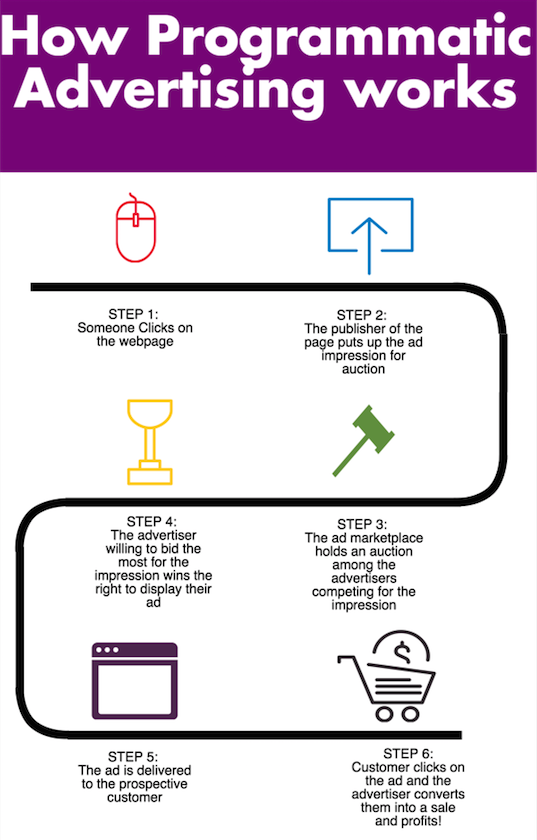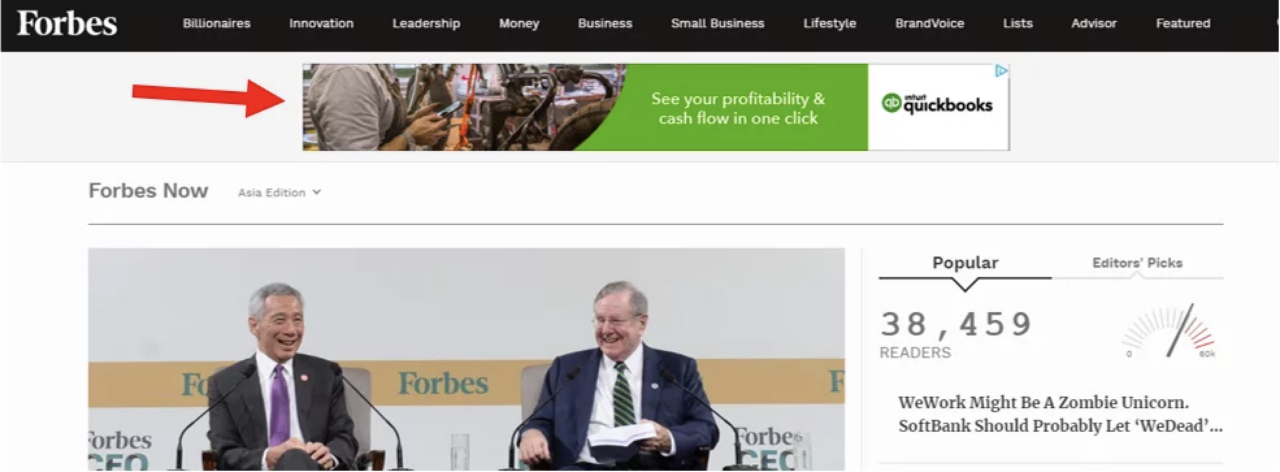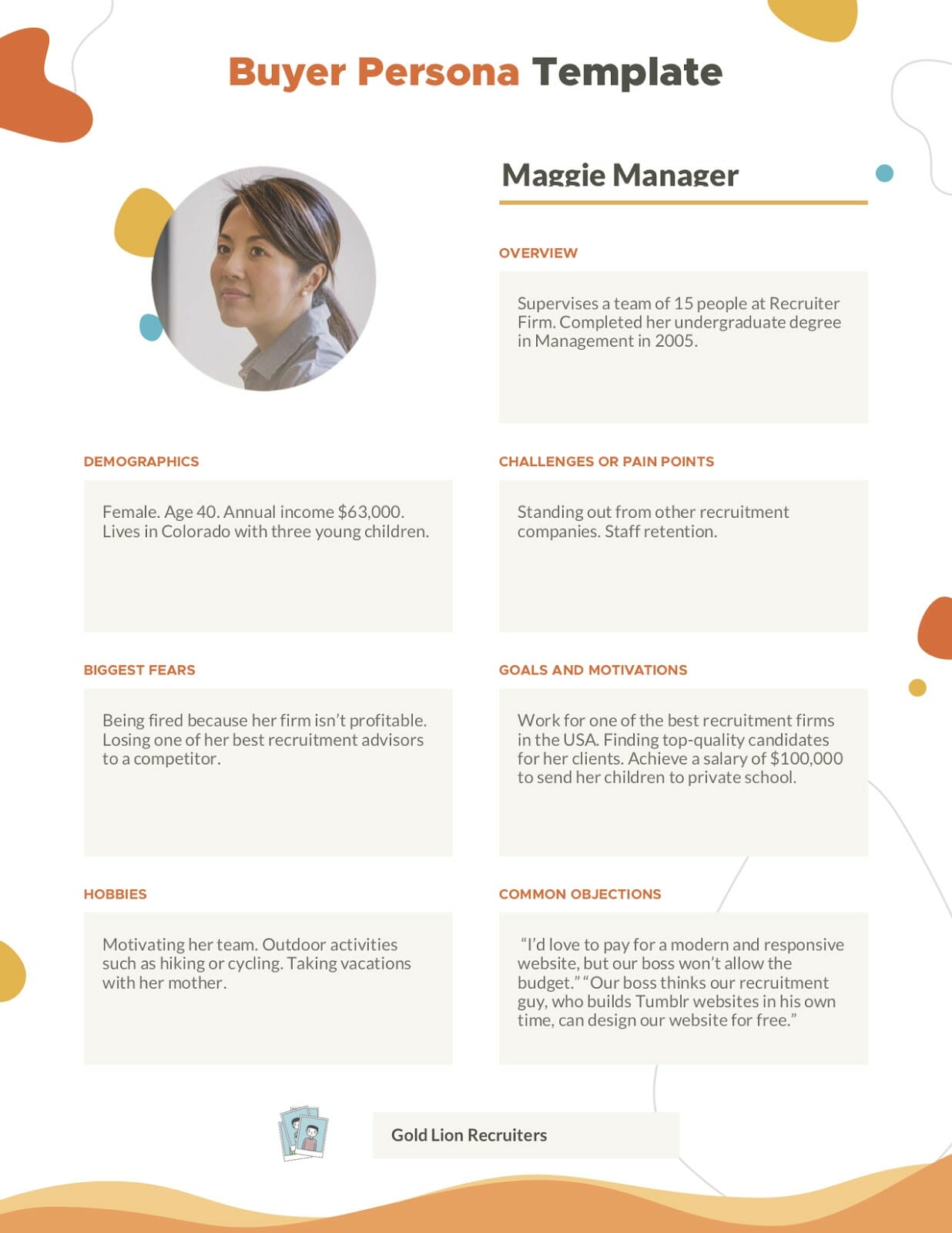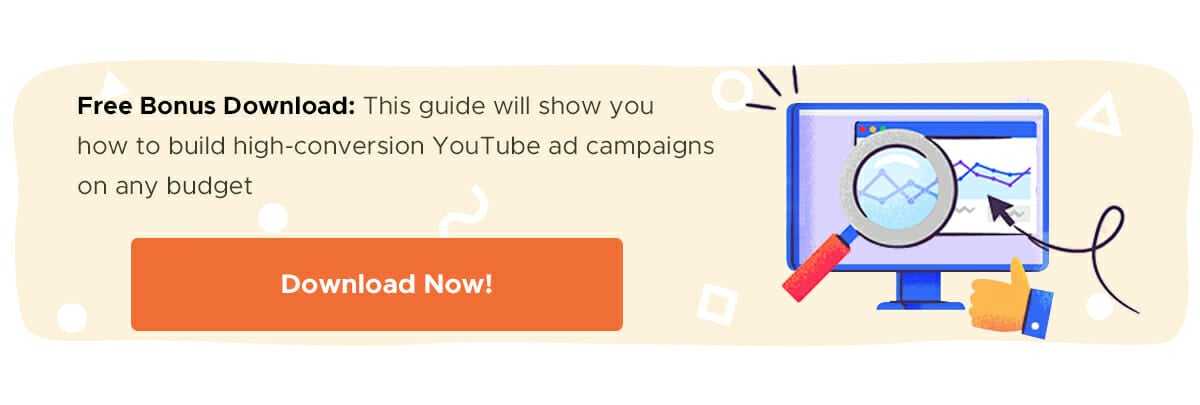B2B advertising is largely focussed on acquiring leads, and one of the biggest challenges B2B marketers face is targeting the right audience.
Today, there is no place for broad audience targeting. To acquire high-quality leads, targeting needs to get as precise and specific as possible. For instance, if you’re a content marketing agency that wants to target CMOs and decision-makers of startups who read Marketing Week – you can.
That’s the magic of B2B programmatic advertising – the ability to use accurate, real-time data and deliver ads to the right prospects, at the right moment.
As per eMarketer, by 2021, 88% of all U.S. digital display ad dollars will transact programmatically. So, with more and more companies exploring programmatic and realizing the benefits that it offers, programmatic advertising is undoubtedly here to stay.
What Is Programmatic Advertising?
Before we dive into how you can acquire leads from programmatic networks, let’s first understand what programmatic advertising is.
Programmatic advertising is the use of artificial intelligence and algorithms to buy and optimize ads in real-time.
It is an automated process that requires you (the advertiser) to specify your target audience’s buyer persona and campaign budget, after which the algorithm takes care of the targeting, placement and delivery of the ad.
- Advertisers use a Demand Side Platform (DSP) to buy ads, which in turn bids for spaces through an ad exchange.
- Publishers use a Supply Side Platform (SSP) to feed information about their website and audience into the ad exchange.
When a user visits a web page, the publisher sends the visitor’s data and website information to an ad exchange after which a real-time auction takes place among advertisers whose target audience matches that criteria.
Finally, the advertiser that bids the highest for impressions wins and gets to deliver their ad on that particular web page. While this sounds like a time-consuming process, all of this happens in a matter of seconds as the web page loads.

This is where your ad appears:

The three main types of programmatic advertising are:
- Real-time bidding (RTB) – buying and selling of ad space takes place in real-time
- Programmatic direct – advertisers purchase impressions in advance and get guaranteed placements at the decided price
- Private marketplaces – used by publishers so they have control over who can buy their inventory
One of the main highlights of programmatic advertising is its ability to deliver contextual ads, which means that it delivers ads based on the context of the website the user is browsing, making it relevant and part of the user’s experience without being intrusive.
As programmatic merges first- and third-party data, it helps you deliver more personalized ads that are likely to resonate better with the audience. Due to its enhanced targeting capabilities, programmatic advertising also poses to be a cost-effective solution as it generates better-quality leads at lesser costs.
Apart from saving money, programmatic advertising is also more efficient as you don’t have to spend time negotiating, sending proposals and setting up campaigns. Instead, the technology does all the heavy lifting.
Dive Deeper:
- 5 Trends that Will Define the New Vision of Marketing Automation
- How AI Is Shaping the Future of Content Marketing and Personalization
How to Acquire Leads with Programmatic Ads
To make programmatic ads work for you, it’s essential to know what makes for a successful programmatic ad campaign. Here are five key steps to help you put together a winning programmatic advertising strategy to generate high-quality leads.
1) Choose the Right DSP
Choosing the right Demand Side Platforms (DSP) marks the first step of running a programmatic ad campaign.
DSPs are used by advertisers to buy placements in the form of video ads, display ads, mobile ads and search ads. DSPs connect to multiple ad exchanges, enabling you to purchase and optimize ads, so choosing the right DSP is a crucial step.
With numerous Demand Side Platforms available in the market, it’s easy to get overwhelmed. These are the five factors you must consider while evaluating DSPs:
- Inventory pool – Your primary goal behind choosing a DSP is to get access to its inventory. However, just because a DSP has the “widest reach” does not make it ideal for you. They should be able to cater to your niche targeting needs while having the ability to run multiple ad formats such as in-app, pop-ups, rich media, pre-roll and email, among others.
- Platform fees – Some DSPs charge a platform fee and a percentage of your bid, while others only charge you for the inventory.
- Efficiency – How efficient is the DSP when it comes to handling the buying, bidding and optimization requirements?
- Assistance provided – DSPs need to have dedicated account managers who are in line with your campaign goals and KPIs and can offer all the technical support you need.
- Brand safety and trust – It’s essential to know how prepared the DSP is for tackling ad fraud and what tools they have in place to protect your brand.
2) Leverage 1st- & 3rd-Party Data for Enhanced Targeting
Data is vital to the success of your programmatic campaign. The more accurate data you feed about your target audience’s buyer persona, the more enhanced the targeting is. Here’s an example of a buyer persona template:

With programmatic advertising, you are not just relying on first-party data, which comes from your CRM and market research, but you can also use it in conjunction with third-party data offered by data management platforms (DMP). This lets you run a data-driven and highly targeted campaign to reach your desired audience.
The common types of targeting in programmatic advertising are:
- Contextual – ads are delivered based on the context of the website
- Keyword – ads are served based on the keywords supplied
- Data – ads are delivered based on the user’s website behavior
- Location – ads are served based on the location of the user
- Retargeting – target people who have already engaged with your brand in the past
Dive Deeper:
- 4 Steps to Discover Your Ideal Buyer Persona for B2B Marketers
- Geotargeting: How to Find the Right Customers for Your Brand
- The 30-Day Strategy to Build an Audience (Without Spending a Dime!)
3) Create Relevant, Dynamic Creatives
Although ad placement is crucial, so are ad creatives. Let’s face it – there is no way your ad will be considered if it is not compelling enough.
A successful programmatic campaign is made up of powerful and dynamic creatives that are relevant and communicate your message.
This is where programmatic creative comes into the picture. Advertisers can design data-driven creatives that are eye-catching, clear and customized as per audience insights that go beyond the one-size-fits-all approach and run seamlessly across various devices.
An example of a brand that married data and creative to target the right people in the right context with their enticing campaign was The Economist: They created more than 60 executions and got over 3.6 million new people to take action:

Dive Deeper:
- How to Create Compelling Text Ads on Google (with Examples)
- How to Improve Your Amazon Ads to Increase Sales
- 30 Winning Facebook Ads and Why They’re so Effective
- 13 Best Super Bowl Ads of all Time: What Your Business Can Learn from Them
4) Ensure Brand Safety
One of the biggest concerns surrounding programmatic advertising is brand safety and ad fraud which has been growing as programmatic buying continues to expand. The last thing you want is for your ad to be served on a website with questionable content that is not in line with your brand values or maligns its reputation.
So how do you prevent such a scenario? Start with establishing what “brand safety” means for your company. You need to clearly communicate your brand safety policy to your agencies, vendors and other partners and also consider sharing a list of websites you want to stay away from.
Another way to ensure brand safety is to transact inventory via private marketplaces so you can be sure your ads will only appear on premium safe websites.
Dive Deeper:
- How Poor Website Security Negatively Impacts SEO Rankings
- The Complete Guide to Brand Building (Must-Read for Digital Marketers)
- 10-Step Checklist to Digital Branding for SMBs
- 22 Digital Marketing Trends You Can’t Ignore Going Into 2020
5) Stay Alert and Make Changes on the Go
Programmatic advertising is an automated process, but that does not mean you can sit back and wait for the results to appear magically.
While you can have a plan and strategy for programmatic campaigns in place, it’s important to stay alert, be flexible and make changes basis real-time data to optimize the campaign. You will need to continually evaluate metrics clicks, conversions, lead quality, etc. and adjust bids or your creative assets if need be to maximize performance.
Final Thoughts
With the evolution of advertising technology, it makes absolute sense for B2B marketers to join the bandwagon and adopt programmatic advertising to reach prospects who are most likely to convert and boost their lead generation efforts.
From increasing awareness to delivering the right content to users at every step of the buying stages by leveraging data, programmatic advertising promises to reach better-quality leads at optimized costs.



